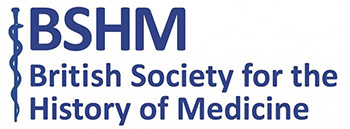
Although it often seems like everything is on Wikipedia (the main page currently features articles on the oldest living Pole, the feathers of birds, and 1894 flash floods in Austria, for example!) there are many areas that could benefit from some substantial improvements, and the history of medicine is one such field. So on 11th April, the British Society for the History of Medicine brought people together at the Wellcome Library to celebrate some of the medics, places, and events that deserve a more prominent place in the online historical record.
The Viewing Room was packed with a mixture of historians, medics, students and local wiki-editors. We began the day with inspirational talks from Iain Macintyre and Emily Mayhew, who took historic images as their focus. As we listened to them speak, topics for improvement were rapidly added to the event page – the history section of the medical illustration page needs work, and the moribund wards which Mayhew mentioned seem like a topic deserving of a page.
Most of those attending had done little or no editing of Wikipedia before, but nowadays it’s very straightforward to get started. Everyone logged in and the Wiki-editing part of the day began with new editors introducing themselves on Wikipedia and exploring some of the page-features they’d never used before, such as Talk pages where editors discuss articles and History pages where you can see every single change ever made to a page. By lunchtime, the room was buzzing with conversations about the talks and about which pages people were planning to tackle!
After lunch, Ross MacFarlane provided a quick tour of the online resources of the Wellcome Library that can be used as sources and inspiration for editing, such as the Digital Collections that are available to all users and Databases and Journals that can be accessed free with a Library card. Nusa Faric talked about her research into why people contribute to medical pages on Wikipedia, and inspired us by showing how many people can benefit from improved articles and introducing us to Wikipedia Zero (a project to provide Wikipedia free of charge on mobile phones, particularly in developing markets). Fired up and ready to go, the group dived in to editing! Some began creating pages from scratch in their Sandbox, whilst others launched into making improvements or corrections on existing pages.
New pages have already been created for leprosy doctor Isabel Kerr; Beryl Corner, who halved newborn mortality rates; cancer researcher Henry Wade; Mary Sturge, who conducted pioneering work on alcoholism; a tool for dental extraction called Coupland’s elevators; and Gilbert Primrose, surgeon to King James I. Pages for Edward Berdoe and Florence Barrett have been improved, the date of publication of De Humani Corporis Fabrica Libri Septum by Vesalius has been corrected on the History section of the Medical illustration page, and a fascinating snippet about the re-enactment of surgery has been added to the Historical accuracy section of the page on the television series The Crown. Other pages in the works include a draft on psychiatrist and mental health campaigner Doris Odlum. Impressive work for such a short time!
Readers are already enjoying this work too – just counting the brand new pages created as part of the editathon, they have been viewed 498 times already (in just a single week!).
There is still more to be done though. A list of the Presidents of the Royal College of Surgeons of Edinburgh shows that many of these eminent figures are yet to have articles, and many of the women doctors listed on the event page still need pages creating or improving. These themes tie in perfectly with two of the themes of the BSHM Congress this year: Women in Medicine and Scotland’s Contribution and Influence. So if you find yourself inspired by a paper in Edinburgh this September, and want to share fascinating stories from the history of medicine with a wider audience, consider joining the Wiki-editing! There are lots of BSHM members who can give you pointers on getting started, and you’re very welcome to contact me at the Wellcome Library too.
Alice White
Wikimedian in Residence at the Wellcome Library
Email: a.white@wellcome.ac.uk
Tweet: @HistorianAlice


